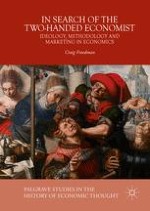2016 | OriginalPaper | Chapter
Love among the Ruins: Understanding The Romantic Economist by Richard Bronk (2009)
Author : Craig Freedman
Published in: In Search of the Two-Handed Economist
Publisher: Palgrave Macmillan UK
Activate our intelligent search to find suitable subject content or patents.
Select sections of text to find matching patents with Artificial Intelligence. powered by
Select sections of text to find additional relevant content using AI-assisted search. powered by
